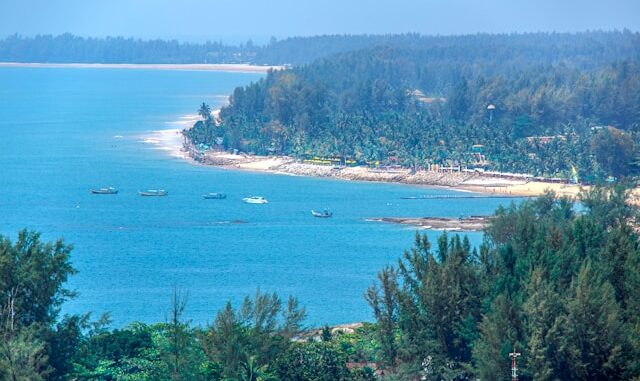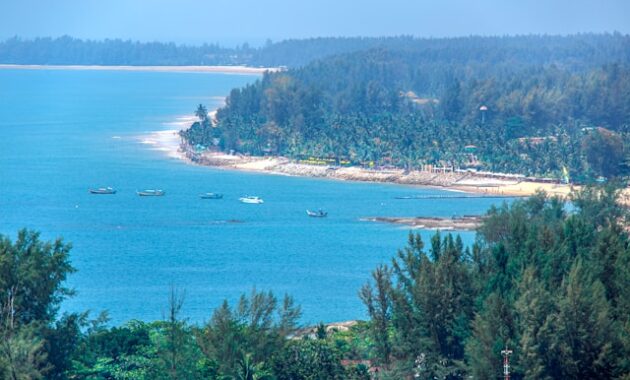
Koh Phang Nga, a region often overshadowed by Thailand’s more famous destinations, holds a rich history and cultural heritage waiting to be discovered. While tourists flock to the beaches and nightlife of nearby islands, Koh Phang Nga remains an untouched treasure trove of historical landmarks, ancient settlements, and cultural wonders. Let us take you on a journey through the lesser-known yet historically significant sites of this beautiful province.
The Ancient Roots of Koh Phang Nga
Koh Phang Nga is not just a natural paradise; it has a history dating back thousands of years. Archaeological evidence suggests that early settlers, including seafaring traders from India and China, established communities along its coast. These interactions brought cultural influences that are still visible today in the local architecture, art, and traditions.
Prehistoric Rock Art at Khao Phra Thaeo
One of the most significant historical sites in Koh Phang Nga is Khao Phra Thaeo National Park, home to ancient rock paintings estimated to be over 3,000 years old. These pictographs, found in hidden caves, depict hunting scenes, maritime journeys, and depictions of early human settlements. These artworks provide a glimpse into the lives of prehistoric communities who thrived in the region.
The Lost Kingdoms and Historical Settlements
Ban Thung Tuk – The Forgotten Port City
Nestled along the Andaman coastline, Ban Thung Tuk is a fascinating historical site that was once an important trading hub during the Srivijaya Empire (7th-13th century). Archaeological excavations have uncovered Chinese porcelain, Persian glassware, and Indian artifacts, proving that Koh Phang Nga was a crucial stop along ancient maritime trade routes. Today, visitors can explore the remnants of ancient structures and imagine the bustling markets that once thrived here.
Takua Pa Old Town – The Sino-Portuguese Legacy
Takua Pa, often referred to as the “Little Phuket,” was a prosperous tin mining town during the 19th century. Its streets are lined with well-preserved Sino-Portuguese mansions, historic shop-houses, and old temples, reflecting the influence of Chinese and European settlers. Walking through Takua Pa Old Town is like stepping back in time, with its colorful colonial buildings and traditional tea houses offering a unique cultural experience.
Sacred Temples and Religious Heritage
Wat Suwan Khuha – The Cave Temple of Wonders
One of Koh Phang Nga’s most breathtaking religious sites is Wat Suwan Khuha, also known as the “Cave Temple.” Hidden within a limestone cavern, this temple is home to a magnificent golden reclining Buddha statue, surrounded by intricate Buddhist murals and statues. The temple has been a spiritual retreat for monks for centuries and remains a peaceful sanctuary for those seeking tranquility.
Wat Rat Uppatham – The Temple of the Rising Dragon
Located on a lush hillside, Wat Rat Uppatham (also known as Wat Bang Riang) is famous for its majestic dragon staircase, towering pagodas, and panoramic views of the surrounding jungle. This temple is a blend of Thai, Chinese, and Hindu architectural styles, showcasing the diverse cultural influences that have shaped Koh Phang Nga over the centuries.
Hidden Historical Gems Beyond the Mainland
Koh Yao Noi – The Island of Time Forgotten
Unlike its bustling neighbors, Koh Yao Noi remains one of Thailand’s best-preserved cultural islands. Its fishing villages, wooden stilt houses, and centuries-old mosques tell the story of the indigenous Moken people, also known as “Sea Gypsies.” These nomadic seafarers have inhabited the Andaman Sea for generations, preserving their traditions and way of life despite modernization.
The Sunken Shipwrecks of Phang Nga Bay

Beneath the emerald waters of Phang Nga Bay lie shipwrecks dating back to World War II. These sunken vessels, now encrusted with coral and marine life, serve as underwater time capsules, providing insight into the region’s military history and maritime past. Diving enthusiasts can explore these wrecks and uncover the hidden stories of battles fought in these waters.
Preserving Koh Phang Nga’s Historical Legacy
While Koh Phang Nga is known for its natural beauty, its historical significance deserves greater recognition. Efforts are being made by local authorities and historians to preserve its ancient sites, ensuring that future generations can appreciate the region’s rich cultural heritage. Sustainable tourism initiatives are also encouraging visitors to explore these historical gems while respecting their cultural and environmental importance.
Conclusion
Koh Phang Nga is a destination that offers far more than stunning beaches and dramatic limestone cliffs. Its hidden historical gems, from prehistoric rock art to forgotten trading ports, sacred temples, and ancient shipwrecks, make it a must-visit for history enthusiasts and cultural explorers. Next time you visit Thailand, venture beyond the usual tourist spots and uncover the timeless heritage of Koh Phang Nga.